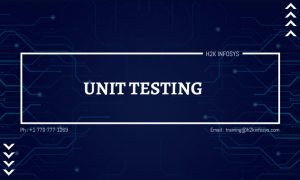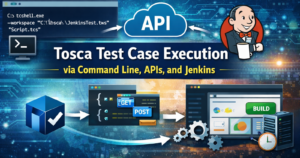In software quality assurance (QA) testing, managing issues effectively is critical to delivering high-quality products. Issue attributes form the foundation for organizing and addressing bugs, defects, or any discrepancies during the testing process. They help teams identify, categorize, and prioritize issues, ensuring they are resolved systematically. In this comprehensive guide, we will delve into what issue attributes are, how they play a crucial role in QA testing, and how mastering them through a QA Testing Online Training Course can help you succeed as a tester.
Issue Attributes are the measures to find the position of work in a workflow, importance, or Priority of an issue in the workflow, and how the issue has been resolved.
Introduction to Issue Attributes
Issue attributes are the specific details or properties assigned to each defect or bug identified during the software development lifecycle. They serve as metadata, which helps testing teams log, track, and manage issues efficiently. In any QA process, the accurate documentation and analysis of issues are critical for the success of the project. With proper issue attributes in place, developers and testers can prioritize their work based on urgency and complexity, ensuring that critical issues are addressed promptly.
Issue Attributes includes:
- Status
- Resolution
- Priorities
Status:
Status indicated the progress of a project, task, or issue. When an issue is created, its default status is also created. These statuses can be edit or deleted anytime as per the team’s needs.
The list of various statuses is given below:
- To do: This indicates that the issue has been created and waiting for the team to work upon.
- In Progress: This indicates that the assignee has started working on the task, project, or issue.
- Open: It indicates that the issue is in the open state, and the assignee can start working on it.
- Closed: The work has been finished, and the resolution is correct. Please note that the closed task can be reopened at any time if further issues can be observed at work.
- Reopened: The work has been closed, but due to some incorrect resolution, it has been reopened.
- Resolved: The reopened issue has been fixed and is waiting to be reviewed. If the review is successful, then it will be closed; otherwise, it will be reopened again.
- Done: It indicates that the work has been finished.
- Under Review: This means that the work has been done by the assignee but is waiting to be reviewed by the reviewer.
- In Review: This means that the reviewer has started reviewing the issue.
- Approved: This means the reviewer has approved the work done by the assignee.
- Rejected: This means the reviewer has rejected the work done by the assignee.
Resolution:
Resolution indicates the ways to close an issue. It is usually defined when the status of the project, task, or issue is changed.
The list of various resolutions are given below:
- Fixed: This indicates that the issue has been successfully fixed.
- Won’t Fix: The issue cannot be actioned.
- Duplicate: This means that the problem is a duplicate of an existing issue.
- Incomplete: The information given in the description of an issue is incomplete, and due to this incomplete information, the issue cannot be fixed.
- Cannot Reproduce: This means that the issue cannot be reproduced or enough information is not available to reproduce the issue. There is no clue why the issue has occurred while reading the code.
Priorities:
Priority is used to set the importance of an issue. The priority of an issue can be changed anytime.
- Critical: When a serious problem exists in the project that can block the functionality.
- Trivial: When the issue can affect the project.
- Minor: A minor problem that can be easily fixed and does not impact or no impact on the project.
- Blocker: When an issue blocks the functionality of a product or a project, it is termed as a blocker.
- Highest: When an issue blocks the functionality of a product or a project. It is another term for Blocker.
- High: When a serious problem exists in the project that can block the functionality. It is another term for Critical.
- Medium: When the issue can affect the project. It is another term for Trivial.
- Low: When the problem has a minor effect on the project.
- Lowest: A minor problem that can be easily fixed and does not impact or no impact on the project. It is another term for Minor.
How to add, edit, or delete Status?
- Go to Settings and then Issues.
- Select option Statuses under Issue Attributes.
- Click on the Add Status and define name, description, and category (to do, in progress, done, etc.).
Statuses can be easily edited anytime with the same steps. Statuses can also be deleted by simply clicking on the Delete available on the Statuses page.
How to add, edit, or delete Resolution?
- Go to Settings and then Issues.
- Select option Resolutions under Issue Attributes.
- Fill the name, description, and category.
- Click on the Add button.
Resolutions can be easily edited anytime with the same steps. Resolutions can also be deleted by simply clicking on the Delete available on the Resolutions page.
How to add, edit, or delete Priority?
- Go to Settings and then Issues.
- Select option Priorities under Issue Attributes.
- Fill the name, description, and category.
- Click on the Add button.
Priorities can be easily edited anytime with the same steps. Priorities can also be deleted by simply clicking on the Delete available on the Priorities page.
Conclusion
Issue attributes form the backbone of efficient QA testing and defect management. By understanding and applying issue attributes such as issue type, severity, priority, and status, QA professionals can streamline bug resolution processes, improve collaboration, and ultimately deliver higher-quality software.
Key Takeaways:
- Issue attributes provide essential details that help prioritize and resolve defects.
- Consistent and accurate use of issue attributes ensures smoother collaboration between teams.
- Automated tools like Jira can simplify the management of issue attributes.
- Mastering issue attributes through practical training is essential for career success in QA.

























